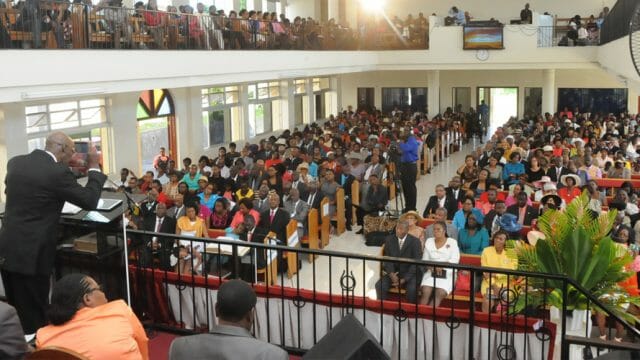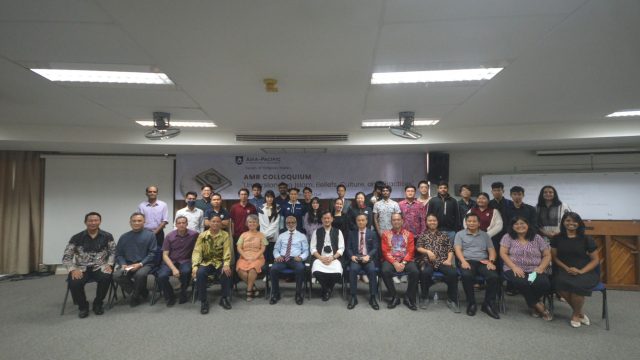Thoughts on transparency and integrity

The Bible tells the story of Samuel, God’s prophet to the nation of Israel. After he had anointed Saul as the first king of Israel and prepared to assume a less-prominent role, he addressed his fellow Israelites:
“I have been your leader from my youth until this day. Here I stand. Testify against me in the presence of the Lord and His anointed. Whose ox have I taken? . . . Whom have I cheated? Whom have I oppressed? From whose hand have I accepted a bribe to make me shut my eyes?” (1 Sam. 12:2, 3, NIV).
“‘You have not cheated or oppressed us,’ they replied. ‘You have not taken anything from anyone’s hand’” (verse 4, NIV).
“Samuel said to them, ‘The Lord is witness against you . . . that you have not found anything in my hand’” (verse 5).
At the end of a long career serving God’s people, Samuel not only had a clear conscience regarding his service, but the people admitted that everything he did had been achieved with transparency and integrity.
That should be a model for all of us.
Sadly, we live in an age in which integrity and transparency seem outdated relics of a nostalgic past. Even those we think we know well are sometimes less than honest. And some who regularly show up on newsfeeds deliberately blur the boundaries between truth and deceit.
It all starts with character. Some have described character as that trait of doing the right thing when no one is looking. When our minds and hearts are reconciled, our words and actions are consistent. Most of us spend our lives trying to reconcile our thoughts with our actions. God through Jeremiah said, “I will put my law in their minds and write it on their hearts” (Jer. 31:33, NIV). This doesn’t happen in a vacuum.
Transparency and integrity are virtues that require both implementation and cultivation. They come in the spiritual package implanted in us by the Holy Spirit, but they require learning along the way. We are not moral and good by ourselves. Ellen White wrote: “Christ is the source of every right impulse. He is the only one that can implant in the heart enmity against sin. Every desire for truth and purity, every conviction of our own sinfulness, is an evidence that His Spirit is moving upon our hearts.”¹
No one has a monopoly on transparency and integrity. It’s a matter that touches us all. Transparent honesty and openness are qualities that make things obvious, easy to understand. They are reflections of character.
Integrity is the virtue of being honest and fair. It is adherence to moral and ethical principles. It is moral uprightness, the state of being whole or undivided. Ambiguity and duplicity are unacceptable behaviors. In their place, some have started to use the term “transparent integrity.”²
AUTHENTICITY AND CHURCH LIFE
How is transparency and integrity lived out in the context of church life? When we speak of transparency and integrity, we’re actually talking about authenticity. Authenticity was seen by Stoic Greeks “as a moral response to declining civic and religious values.”³ In our case, the perspective we hold as Seventh-day Adventists is grounded on our search for holiness, trustfulness, and truth as we adhere to a transcendent worldview of ethics and morality.
The Holy Spirit is transformative in terms of holiness and true authenticity. Authenticity includes being self-aware, showing a balance in processing the opinions of others, acting within the boundaries of ethics and morality.⁴
TRANSPARENCY AND INTEGRITY IN SCRIPTURE
Scripture has much to say about persons who act with integrity and transparency.
King David wrote: “Lord, who can dwell in Your tent? Who can live on Your holy mountain? The one who lives honestly, practices righteousness, and acknowledges the truth in his heart—who does not slander with his tongue, who does not harm his friend or discredit his neighbor, who despises the one rejected by the Lord but honors those who fear the Lord, who keeps His word whatever the cost, who does not lend his money at interest or take a bribe against the innocent—the one who does these things will never be moved” (Ps. 15, HCSB).⁵
David also asked: “Who may ascend the mountain of the Lord? Who may stand in His holy place? The one who has clean hands and a pure heart, who has not set his mind on what is false, and who has not sworn deceitfully” (Ps. 24:3, 4, HCSB).
God said through the prophet Jeremiah: “I will give them integrity of heart and action so that they will fear me always, for their good and for the good of their descendants after them” (Jer. 32:39, CSB).⁶
Living in integrity and acting transparently is synonymous with holiness and acting righteously. Consider the following:
“The integrity of the upright guides them, but the perversity of the treacherous destroys them” (Prov. 11:3, HCSB).
“Surely You desire integrity in the inner self, and You teach me wisdom deep within” (Ps. 51:6, HCSB).
The path of the righteous is the path of wisdom and integrity, and the result and the effect of righteousness is peace, and quiet confidence.⁷ David prayed, “Give me an undivided mind to fear Your name” (Ps. 86:11, HCSB).
A HIGH STANDARD
For Christians, integrity, authenticity, and transparency are essential characteristics, not because they are traits universally admired by people who live public lives, but because they were perfectly demonstrated in our Lord Jesus Christ. One of the things that distinguished Peter and John after Christ’s ascension was that people noticed that “these men had been with Jesus” (Acts 4:13, NIV).
Let’s fill our minds with the challenge, the opportunity, and the privilege that transparency and integrity bring to us. Trust is all we have as Christians. It is what moves followers to fulfill their own function. Adventists have no other option than being transparent and acting with integrity.
¹ Ellen G. White, Steps to Christ (Mountain View, Calif.: Pacific Press Pub. Assn., 1956), p. 26.
² www.terna.it/en-gb/chisiamo/trasparenzaeintegrita.aspx and thegreatworkplace.com/2568/transparent-integrity-where-is-mr-oz.
³ M. M. Novicevic, M. G. Harvey, et al., “Authentic Leadership: A Historical Perspective,” Journal of Leadership and Organizational Studies 13, no.1 (2006): 64-76.
⁴ B. J. Avolio and W. L. Gardner, “Authentic Leadership Development: Getting to the Root of Positive Forms of Leadership.” The Leadership Quarterly 16 (2005): 315-338.
⁵ Texts credited to HCSB are taken from the Holman Christian Standard Bible, copyright © 1999, 2000, 2002, 2003 by Holman Bible Publishers. Used by permission.
⁶ Texts credited to CSB are from the Christian Standard Bible. Copy- right © 2017 by Holman Bible Publishers. Used by permission.
⁷ Ps. 1:1-3; Prov. 4:18-27, HCSB.








